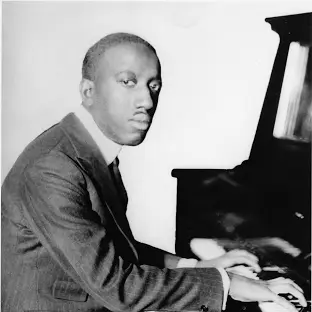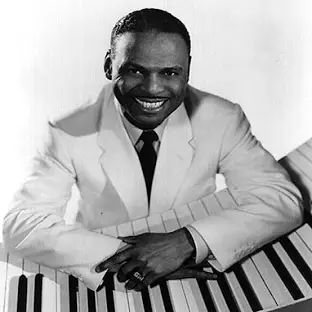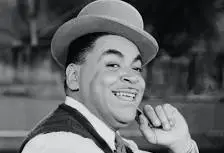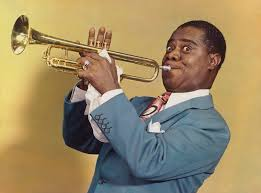5 The Start of Swing
Let's get back into talking about some pianists like Jelly Roll Morton who introduced more jazz-standard, like Stride (Piano) and Trumpet Style:
Just as Jelly Roll Morton turned Ragtime into Jazz (Definition), here James P. Johnson started doing more Stride (Piano).

Listen to the style (more than the structure) of this piece he plays. Notice specifically the Stride (Piano)
- He's definitely all over the place in the melody
- His LH is all over the piano, his RH is all over the piano
Another example is Carolina Shout.
Nicknamed Earl "Fatha" Hines, he also played Stride (Piano), but importantly he played Trumpet Style which was unique for the time.

Hear him talk about the simple bass-line of Ragtime, and how it contrasts to that of Stride (Piano).
Also a Stride (Piano) pianist of the 1920s. He's usually more of a springy and bouncy stride pianist.

Hear him play Carolina Shout:
- Hear him keep the more Ragtime feel, but have small motifs between phrases where the LH starts to have it's own melodic feel.
You can compare and contrast with Willie "The Lion" Smith playing the same song, where the LH is even more bouncy. Or a more modern player Stephanie Trick playing the same piece (without missing a note, while feeling loose and bouncy).
Started out as a trumpet player after getting an abused one from his orphanage. Nicknamed Louis "Pops" Armstrong, he was the first trumpet player of the standard Jazz (Definition) age in the 1920s.

Blacks initially hesitated to like him, mainly because he became too popular with white folks (and thus it didn't accurately reflect their culture). Players like Miles Davis, who were less for the camera, criticized how much he like the popularity of the white folks. But over time, they started to appreciate the complexity of his pieces.
He also was successful due to his hardworking ethic. He especially talks about how he never took a break in practice, even when doctors advised it.
- He was one of the first true Soloist players.
- He was fluid in his rhythmic conception of the solos
- It's definitely swing, and not Ragtime
- He's thinking ahead in his solos (to know how to move the melody in the right direction and setting yourself up)
- He composed his solos as he went.
- He had a total command (confidence) of his trumpet, a true virtuoso
Contrast his playing of Dipper Mouth Blues, the more Original Dixieland Jazz Band style of playing (notice a distinct Ragtime and disorganized feel), with what he'd play when playing Jubilee. Notice:
- The second piece feels just like a marching band piece.
- His solo in the second piece he plays super high (showing his control, and his power).
- In the first one the improvisation is more jumbled (everyone is playing, it's organized chaos).
Listen to more of his solos in his band Louis Armstrong and His Hot Five. A lot of what is made on his big band was made
Louis Armstrong founded a band, where the pianist would become his wife, Lil Hardin Armstrong.

Songs:
- Struttin' With Some Barbeque: notice the high notes of Louis Armstrong's solo.
- West End Blues with Earl Hines: notice the Trumpet Style in the piano, and again the Soloist coming out of Louis Armstrong. Even notice how the drums are playing really quiet, as recordings back in the day couldn't move the metal cylinder too much (and thus couldn't be too loud).
- In Heebie Jeebies we see a lot of a new Scat Soloing.

Another white famous trumpet Soloist. Comparing with Louis Armstrong, he is more mellow in his tone and chill. He doesn't play the high notes and more technical things like Louis.
See him play with Freddie Trumbauer in Singin the Blues, and Eddie Lang on guitar:
- Notice how somber and mellow it is in comparison to Louis Armstrong and His Hot Five's (ex: the West End Blues, where the chord structure is standard Jazz Form of 12-bar blues).
- We see again the endings of banjo in this piece (as it'll leave jazz eventually).
- There is no bass player, replaced by the guitarist here.
- The drums are likely not heard since it was recorded using sensitive hardware.
He is often considered less virtuostic than Louis, with:
- more melodic phrases
- but more expression with dynamics
- considered the more restrained/controlled in his sound
- cooler, drier tone. He plays with the band more.
Beiderbecke came from a more classical background, so he uses a lot of the whole tone scale in his compositions, such as In a Mist. This would inspire a lot of the common jazz scales we use today!